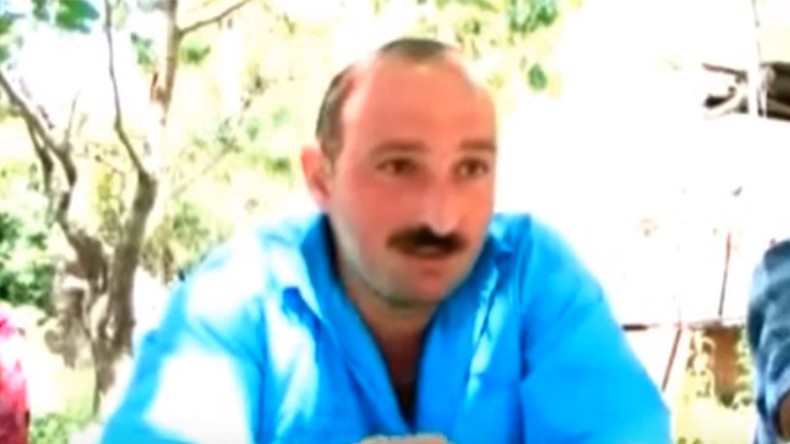
Maragha genocide eyewitness: Armenians are Christians, and they have to be murdered
“The name of this village is associated with a massacre which never reached the world’s headlines, although at least 45 Armenians died cruel deaths. During the CSI mission to Nagorno Karabakh in April, news came through that a village in the north, in Mardakert region, had been overrun by Azeri-Turks on April 10 and there had been a number of civilians killed. A group went to obtain evidence and found a village with survivors in a state of shock, their burnt-out homes still smoldering, charred remains of corpses and vertebrae still on the ground, where people had their heads sawn off, and their bodies burnt in front of their families. 45 people had been massacred and 100 were missing, possibly suffering a fate worse than death.” This is how Baroness Caroline Cox describes the tragedy of Maragha, a village in Karabakh, in her book “Ethnic Cleansing in Progress: War in Nagorno Karabakh” (co-author: John Eibner). She called Maragha a “contemporary Golgotha.”
The details of what happened in the once prosperous village 24 years ago, on 10 April 1992, still chill blood, making one doubt whether the perpetrators can have the right to be called human beings. The stories of the survivors, who currently live in the village Nor (New) Maragha, leave no doubt that what happened in the Karabakh village on that day completely matches the definition of genocide provided by a respective UN Convention. Back in 1997, the Armenian side submitted documents and facts about the tragedy in Maragha to the UN Human Rights Committee. The process could not be accomplished then. However, the Armenian side intends to introduce the Maragha dossier to international agencies once again in the frameworks of An Ordinary Genocide project.
Remarkably, Shahin Talib oglu Tagiyev, the commander of Gurtulush battalion, which attacked the village committing that crime against humanity, was named the first national hero of independent Azerbaijan. This was a continuation of the shameful tradition of heroization of murderers of Armenians, which started with “sumgait” and was continued later in the case of Ramil Safarov, the Budapest maniac.
During the Maragha genocide commemoration days, Panorama.am publishes evidence provided by several former Maragha residents. The full materials are available at karabakhrecords.info and maragha.org.
Araik Grigoryan
The fire started before the dawn. At first, they fired with equipment like Alazan used against grad in the Soviet period, then with cannons and from tanks. People started to leave the village in panic in the direction of the upper villages, there was turmoil everywhere, people were leaving with children in their hands, on transport, and on foot. There was hardly room to move on the way to the upper village situated about 3-4 kilometers from Maragha. Transportation was mainly used by volunteers, who were protecting the village on the front line; that is why women, the old, and children were leaving the village on foot in order to be saved from the fire.
By about 12 p.m., they had already started approaching. Tanks were the first to enter, followed by detachments of bandits and marauders. They were entering from different sides. They started to set houses to fire. They killed or took hostages everyone they met no matter they were civilians or volunteers. Many inhabitants were hiding in earth asylums dug in yards. Everyone, who was hiding there – old men, women, children, men – were either killed or taken hostages. Even if there was nobody inside but the house was Armenian, they frenziedly destroyed it only because of that, broke the utensils, robbed and fired the property. Meeting pets on their way, they treated them with such an unimaginable cruelty only because they were kept by Armenians. They tied an old man from our block – his name was Mushegh – to a tank and dragged him 3 kilometers. If they are Armenians and Christians, they must be killed and destroyed.
Three brothers and their mother were taken hostages. They were driven to Mir Bashir, then to Barda, where one of the brothers was exchanged. He said that they had been treated like animals rather than people when in captivity. He told about the martyrly death of his brother Gagik, who had behaved very bravely and courageously in the captivity answering back to all the insults of the Azerbaijanis. He was punished with a cruel death for that: they tied him to rails and set the train on him. Nothing is still known about his mother and third brother’s fate.
On April 10, 1992, after a 3-hour artillery preparation, the subunits of the Azerbaijani regular army invaded the peaceful village of Maragha from the Azerbaijani Mir-Bashir (currently). The attack was not dictated by military necessity. Over 100 people became victims of the aggression – mainly women, children, and old people. Civilians were killed by the most cruel ways: they were partitioned, burnt alive, beheaded, thrown under tanks, or cut with axes. About 50 people were taken hostages, including 9 children. While in captivity, many Maragha residents were tortured, humiliated, and were a subject to an inhuman treatment. Many of them were later exchanged, but the fate of many is still unknown. In about two weeks, on April 22-23, Maragha was again attacked, people, who had returned to the site of fire, had to leave the native town forever. Currently, Maragha is under Azerbaijani occupation.
Related news
- Maragha massacre eyewitnesses: Dismembered corpses were all around, many people were crushed under tanks
- Eye witnesses' account: 22 years passed after barbaric massacre of Azerbaijani militants in village of Maragha
Newsfeed
Videos






























